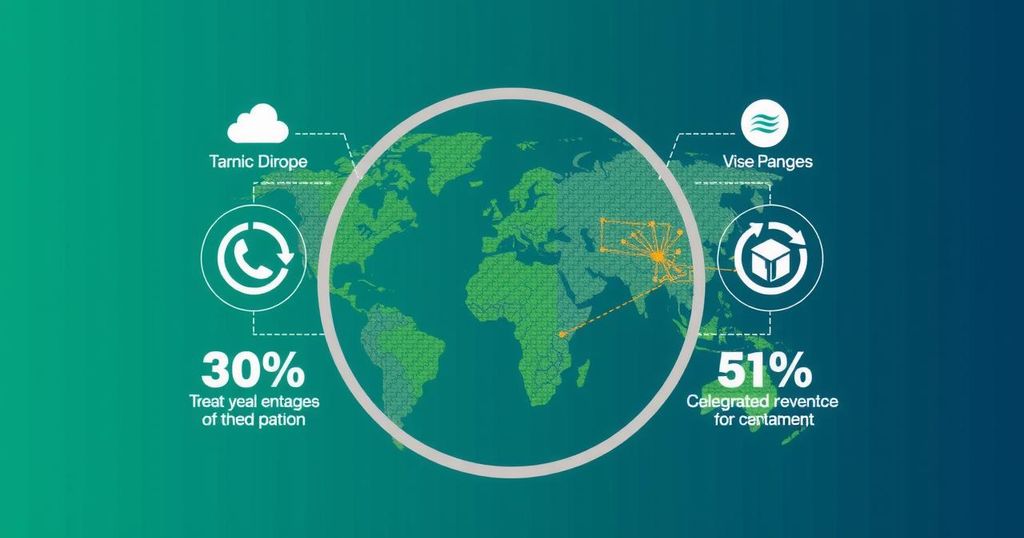Guidelines for Integrating Wildlife Conservation into Climate Action Plans

On October 21, 2024, a set of guidelines was launched by the International Fund for Animal Welfare (IFAW) at COP16 to aid governments in incorporating wildlife conservation into their Nationally Determined Contributions (NDCs). With ten actionable steps, the guidelines aim to help countries enhance their climate strategies by recognizing the essential role of wildlife in carbon sequestration and climate resilience. These guidelines also highlight the economic benefits of wildlife conservation, particularly for biodiversity-rich but climate-vulnerable regions.
On October 21, 2024, in Cali, Colombia, a crucial set of guidelines was launched aimed at enabling governments and policymakers to incorporate wildlife conservation into their Nationally Determined Contributions (NDCs) as part of climate action plans. This initiative, unveiled at the UN Convention on Biological Diversity’s 16th Conference of the Parties (COP16), is spearheaded by the International Fund for Animal Welfare (IFAW) with the publication of its resource titled “Wildlife Guidelines for NDCs: Integrating Wildlife Conservation into National Climate Action Plans.” This launch comes at a pivotal moment when nations are in the process of updating their NDCs by 2025, as per the stipulations of the Paris Agreement. The guidelines offer concrete, actionable recommendations to help countries acknowledge and bolster the role of wildlife in enhancing carbon sequestration and climate resilience. Simon Addison, IFAW’s Climate Advisor, highlighted the immediate significance of these guidelines, stating that they present a clear roadmap for governments to leverage wildlife conservation as a means of mitigating climate change while also fostering resilience and adaptation strategies. With ten specific and practical steps outlined, nations are encouraged to seamlessly integrate wildlife considerations into their NDCs, thus reinforcing both climate initiatives and biodiversity efforts. Notably, existing climate frameworks often overlook the integration of wildlife conservation. The guidelines indicate that numerous countries, especially those that are both biodiverse and climate-vulnerable, frequently neglect the incorporation of wild animals in their greenhouse gas inventories or climate strategies. This oversight represents a critical opportunity lost in the pursuit of enhanced climate resilience while prioritizing biodiversity. Addison further elucidated the purpose of these guidelines, asserting that they equip nations with the necessary resources to view wildlife conservation not merely as an environmental priority but as a fundamental component of climate action. Such recognition allows countries to embed wildlife considerations at the core of their climate strategies, thereby amplifying their commitments both in mitigation of climate impacts and adaptation efforts. Key highlights of the guidelines include: 1. Wildlife’s Role in Carbon Sequestration: Keystone species such as elephants, whales, and apex predators play vital roles in ecosystems that facilitate carbon storage. The guidelines advocate for the protection, restoration, and management of these populations to enhance carbon capture while fostering overall ecosystem vitality. 2. Clear Steps for Integration: The ten-step framework provides specific measures from selecting key species for protection to incorporating wildlife into national greenhouse gas inventories and aligning conservation with other policy initiatives. 3. Economic Benefits: The guidelines elucidate that wildlife conservation and restoration initiatives can generate economic benefits, particularly in Least Developed Countries rich in biodiversity. These actions contribute not only to climate-resilient development but also to forming sustainable livelihoods for vulnerable communities, potentially unlocking new avenues for carbon financing. The comprehensive guidelines are accessible for download at [IFAW Wildlife Guidelines for NDCs](https://www.ifaw.org/resources/wildlife-guidelines-for-ndcs). These guidelines represent a significant advancement in the integration of wildlife conservation into climate action and provide essential tools for countries aiming to align biodiversity with climate strategies effectively.
The intersection of wildlife conservation and climate action has gained increasing prominence in global discussions surrounding climate change and biodiversity. Nationally Determined Contributions (NDCs) represent the commitments made by countries to reduce greenhouse gas emissions and adapt to climate impacts under the Paris Agreement. The new guidelines put forth by the International Fund for Animal Welfare emphasize the critical need to include wildlife conservation within these frameworks, particularly in regions where biodiversity and climate vulnerability coexist. The recognition of wildlife’s role in carbon sequestration is essential for informing comprehensive climate strategies that not only address emissions but also enhance ecosystem health and resilience.
The recently launched guidelines by IFAW serve as a pivotal resource for governments to effectively incorporate wildlife conservation into their climate action frameworks. By acknowledging the significant role of wildlife in carbon sequestration and ecosystem resilience, countries can strengthen their NDCs while promoting biodiversity conservation. These practical, actionable steps empower nations to align environmental priorities with climate strategies, ultimately fostering a more comprehensive approach to addressing the dual crises of climate change and biodiversity loss.
Original Source: www.ifaw.org






